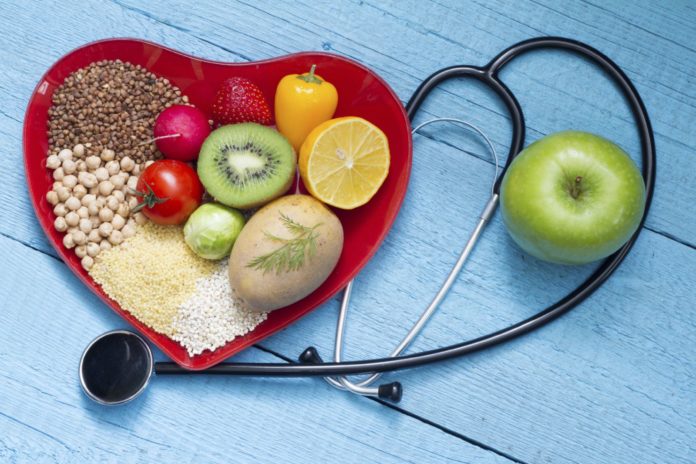Concerned about high cholesterol foods? Wondering how to reduce cholesterol? Looking for a low cholesterol diet plan?
Look no further! Read on for the best how-to guide on good cholesterol foods, low cholesterol foods, and foods to lower triglycerides.
Can I Reduce My Cholesterol?
The short answer? Yes, you can reduce cholesterol but it helps to first understand what cholesterol is.
Cholesterol is a waxy substance found in the body. It’s also found in food sources that come from animals. The body needs the right balance of cholesterol to function well.
There are a couple of key kinds of cholesterol, so it helps to get familiar with each. The three main varieties of cholesterol in the body include:
- High-Density Lipoprotein (HDL): Often referred to as the “good” kind, this type of cholesterol helps the body maintain balance and remove extra cholesterol.
- Low-Density Lipoprotein (LDL): Known as the “bad” kind of cholesterol, this type can contribute to plaque build-up in the arteries (and ultimately to heart diseases).
- Very Low-Density Lipoprotein (VLDL): Like LDL, this type of cholesterol also adds to plaque buildup in the body.
A clinician may also want to discuss total cholesterol, which (as the name suggests) is the total amount of cholesterol in the blood. Some tests also measure non-HDL cholesterol, which is the total number of cholesterol in the body minus the amount of HDL.
What About Triglycerides?
Triglycerides are another type of fat that can build up in the blood. High triglyceride levels can signal some of the following health concerns for seniors:
- Excess body fat
- Excess calorie consumption
- Increased risk for type 2 diabetes
What Happens If You Don’t Lower Your Cholesterol?
Too many triglycerides or too much cholesterol in the blood can stick to the walls of arteries and (quite literally) clog blood vessels in the body. Much like a clogged pipe in a house, the buildup can cause an unwanted interruption in normal function and even have dangerous consequences.
In addition, many seniors struggle with risk factors that work with cholesterol that increase the risk of heart disease. These include:
- Diabetes
- High blood pressure
- Metabolic syndrome
- Inactivity
- Smoking
Patients over 75 years of age can struggle to find the right treatment as well. This is because the potential for negative drug interactions increases, narrowing treatment options. Lowering cholesterol requires a clinician and patient to work together to find the right solution.
Will Lower Cholesterol Mean Lower Blood Pressure?
In most cases, lower cholesterol does mean lower blood pressure. Lower cholesterol levels help to open up the body’s blood vessels, in turn helping the pressure return to normal lower levels.
It may help to picture a garden hose. Imagine it is pinched while the water flows and think about how the hose becomes kinked and unable to work properly in order to get the water flowing. It may even burst if the pressure becomes too great at one point!
Similarly, blood vessels narrowed from cholesterol can cause blood pressure to increase. Other factors that influence blood pressure include genetics, obesity, and some kinds of medication. Since a rise in cholesterol is also a natural part of the aging process, it is important to keep both cholesterol and blood pressure at their appropriate levels.
When To Measure Cholesterol Levels
Aging adults should start measuring their cholesterol more frequently. Men ages 45-65 years and women ages 55-65 years should have cholesterol tested annually.
Normal, healthy levels of cholesterol for older adults are generally as follows:
- Total Cholesterol: Less than 200 mg/dL
- HDL: 40 to 50 mg/dL
- Non-HDL: Less than 130 mg/DL
- LDL: Less than 100 mg/dL
How To Lower Cholesterol With Diet
There are two main habits to break that may help older adults decrease dangerous fat levels in the body. Making strides to moderate drinking alcohol and also to stop smoking can help reduce triglycerides.
In addition to maintaining healthy habits, learning to read a label can be a useful skill. Navigate the nutrition facts more easily by identifying levels of fat, saturated fat, cholesterol, fiber, and sodium.
Increase Dietary Fiber Intake
Soluble fiber is one element of food that helps to lower cholesterol. It’s known to help seniors control blood sugar levels and even lower triglyceride counts. Plus, it adds bulkiness to the stool which helps the elderly maintain normal bowel movements.
Foods like the following contain plenty of fiber to help older adults meet their daily requirements:
Beans and Legumes:
- Black beans
- Chickpeas
- Lentils
- Kidney beans
- Navy beans
- Peas
- Pinto beans
- Soybeans
Cereals:
- Oat bran
- Oatmeal
Fruit and Vegetables:
- Apricots
- Brussels sprouts
- Carrots
- Figs
- Oranges
- Mangoes
- Peaches
Whole Grains:
- Barley (not pearled)
- Oats
Don’t forget to drink plenty of water as fiber intake is increased. Constipation can occur if hydration is not increased along with fiber consumption.
Refined grains and added sugars are often a sign that foods may be too high in cholesterol, too. Keep an eye out for saturated or trans fats, which can raise LDL levels (the “bad” cholesterol) in the body.
Consider Fat Intake
For the basic 2,000 calories per day diet, total fat consumption should be 56 to 78 grams, including mostly “healthy” fats and no more than 13 grams of saturated fat. Examples of “healthy” fats include:
- Avocados
- Nuts (i.e. almonds, peanuts)
- Olive oil
Foods high in omega-3 fatty acids can also help to increase the “good” HDL cholesterol in the body. These foods, like fish, have been shown to have a protective effect on the heart and may prevent blood clots, inflammation, and even more.
Try one of the following types of fish at least two times a week to help lower cholesterol:
- Canned or fresh tuna
- Herring
- Mackerel
- Salmon
- Trout
Watch Out for Sodium
Lots of salt can also increase blood pressure and add to the risks of high cholesterol. Look for foods canned in low salt, no added salt, or their own juices to help lower overall salt levels. Beans can also be rinsed before baking or cooking to decrease the amount of salt in a dish.
Another tactic is to get creative with seasonings like paprika, cinnamon, and fresh herbs like parsley instead of using salt for flavor.
Eat an Overall Balanced Diet
Overall, aim to eat a healthy diet composed of nourishing foods. A balanced meal and diet should include at least one fiber source, lean protein, and healthy fat.
Limiting overly processed foods and increasing wholesome foods can also naturally help people maintain or lose weight. This is helpful for lowering cholesterol, as overweight people tend to be more likely to have high cholesterol and even a slight reduction can improve chronic disease risk factors.
Will Exercise Lower Cholesterol?
Eating to improve health and lower cholesterol contributes greatly to opening the arteries back up again. The diet does this by helping to improve blood flow and balance key components of food (like cholesterol) in the body.
Similarly, exercise promotes a healthy blood flow and decreases the risk of serious cholesterol complications (like heart disease or a stroke). In fact, an increase in activity can raise HDL (“good”) cholesterol levels.
The Bottom Line on Keeping “Bad” Cholesterol At Bay
Like many substances in the body, a balanced amount of cholesterol is needed to keep it functioning. Since cholesterol naturally increases as older adults age, it’s important to understand risk factors.
Simple switches in the diet can help to keep cholesterol at a healthy level during later years in life.
References:
Cholesterol Levels: What You Need to Know. MedlinePlus. Published October 2, 2020. https://medlineplus.gov/cholesterollevelswhatyouneedtoknow.html.
Dodd K. Printable List of High Fiber Foods (Free download!). The Geriatric Dietitian. Published December 13, 2021. https://thegeriatricdietitian.com/printable-list-of-high-fiber-foods/.
Gordon B. What is Cholesterol? Eat Right. Published November 15, 2021. https://www.eatright.org/health/wellness/heart-and-cardiovascular-health/what-is-cholesterol.
Martin S. Older Adults and High Cholesterol: What You Need to Know. Johns Hopkins Medicine. https://www.hopkinsmedicine.org/health/conditions-and-diseases/high-cholesterol/older-adults-and-high-cholesterol-what-you-need-to-know.
Mayo Clinic Staff. Cholesterol: Top foods to improve your numbers. Mayo Clinic. Published July 17, 2018. https://www.mayoclinic.org/diseases-conditions/high-blood-cholesterol/in-depth/cholesterol/art-20045192.
Pinto beans may help lower cholesterol. American Society for Nutrition. Published June 20, 2019. https://nutrition.org/pinto-beans-may-help-lower-cholesterol/.
Robertson R. The 9 Healthiest Beans and Legumes You Can Eat. Healthline. Published December 1, 2017. https://www.healthline.com/nutrition/healthiest-beans-legumes.






